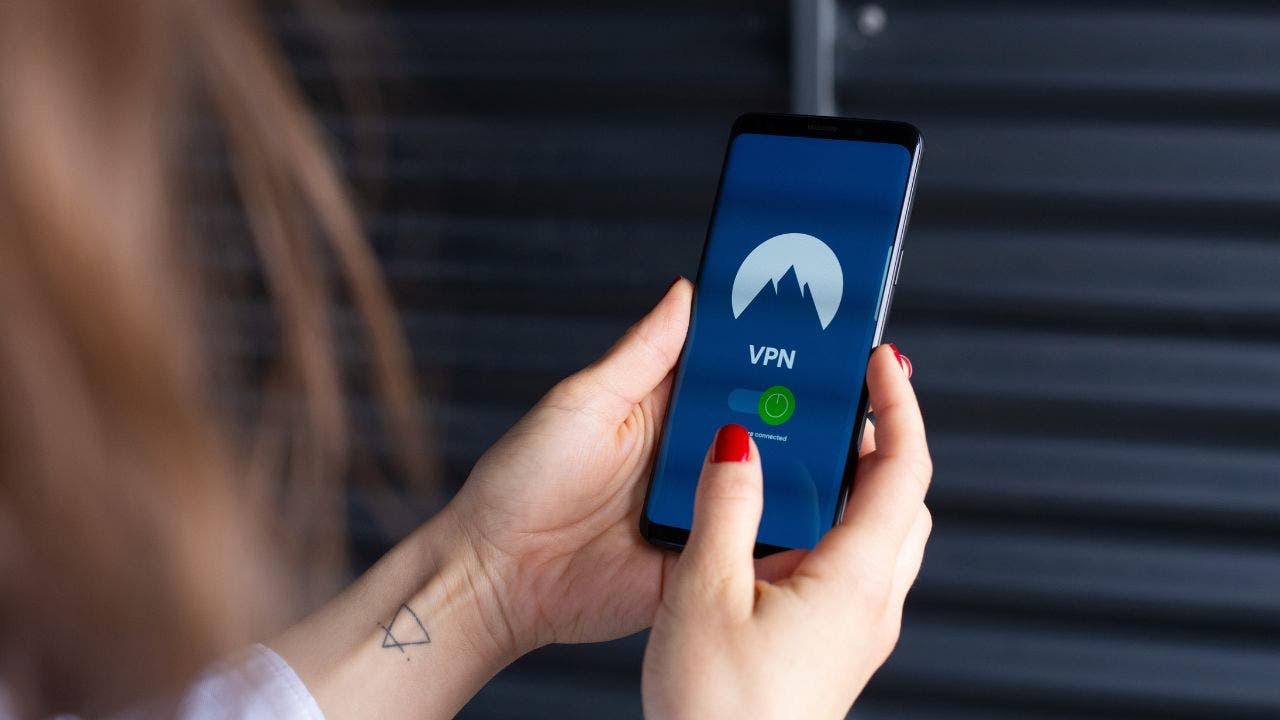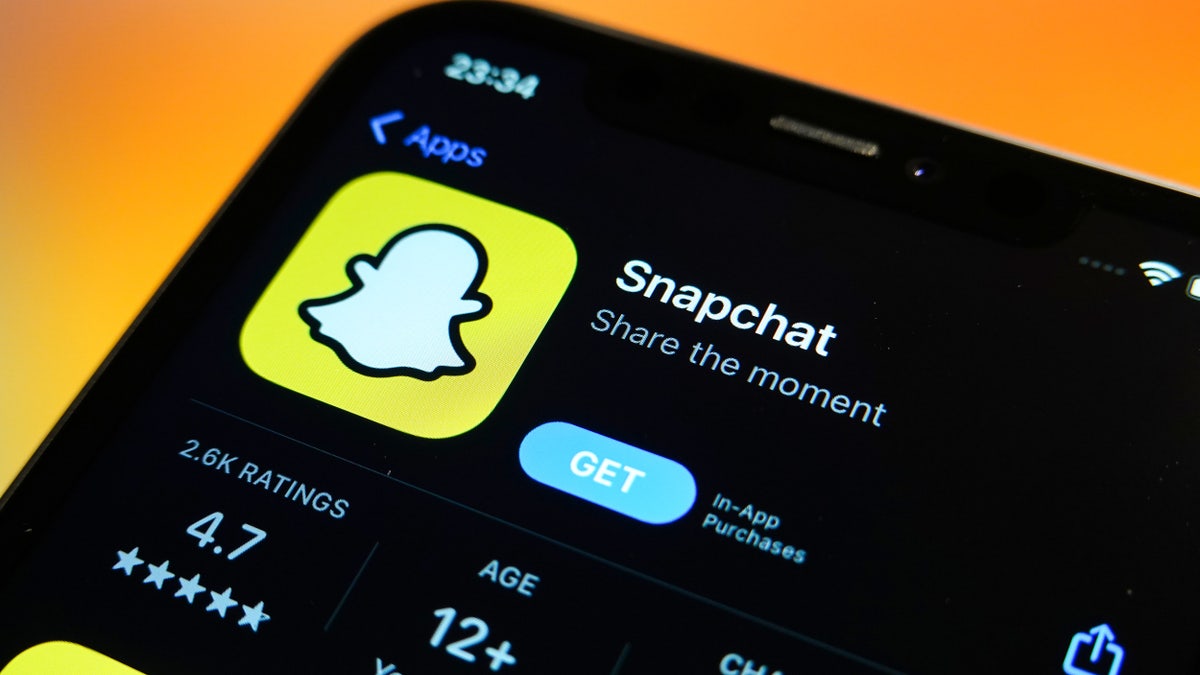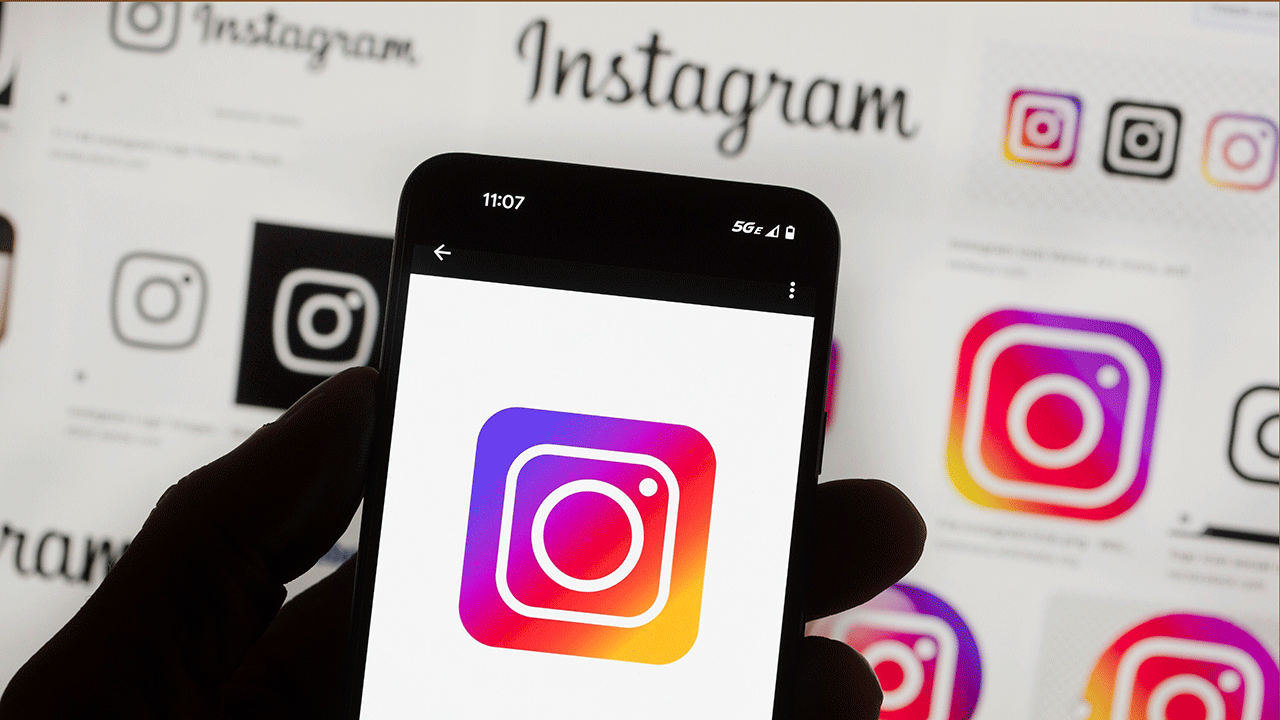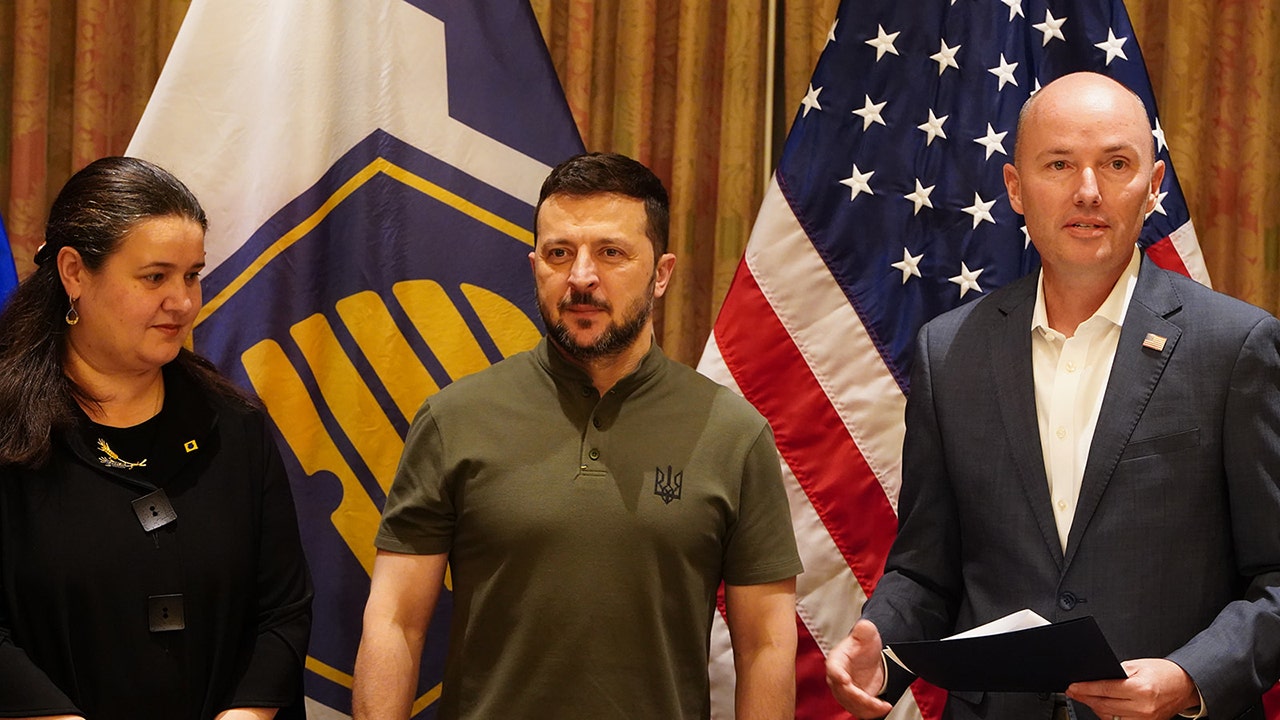The newest security camera from Eufy — Anker’s smart home company — can see clearly in the dark, uses radar motion sensing for fewer false alerts, and records 24/7 when wired. As with other Eufy cams, the new S3 Pro has free facial recognition, package, vehicle, and pet detection, plus locally stored recorded video with no monthly fees.
Technology
Top 4 reasons you might still need VPN with cellular service

Using a virtual private network (VPN) on cellular networks secures your digital life, ensuring privacy and freedom.
Ever wondered if you’re truly safe when browsing on your phone in public? Sure, we’ve all heard the horror stories about public Wi-Fi. But what about when you’re using your cellular data? Is that ironclad protection? And here’s the question: Do you still need to use a VPN?
Believe it or not, while your cellular network is a fortress compared to the wild west of public Wi-Fi, it’s not an impenetrable one. There are still gaps in the armor where dangers can seep through. So, let’s discuss the four top reasons why you might still need VPN even if you’re using your cellular network.
GET SECURITY ALERTS, EXPERT TIPS – SIGN UP FOR KURT’S NEWSLETTER – THE CYBERGUY REPORT HERE
A woman using a VPN on her cellphone (Kurt “CyberGuy” Knutsson)
Top 4 reasons you might still need VPN with cellular service
Here are the top 4 reasons that a VPN will still protect you better than just relying on your cellular service provider.
1. Protect your privacy
Using a VPN (virtual private network) enhances your online privacy by encrypting your internet connection. This encryption makes it challenging for websites and other entities to track your online activities. However, it’s important to note that while a VPN obscures the specific content of your internet traffic, your cellular service provider can still see the overall data usage associated with your account.
CLICK HERE FOR MORE US NEWS
Cellular service providers have the ability to monitor and analyze your data usage patterns. They can collect various types of metadata, such as your location, the times you connect and the total amount of data consumed. Although mobile network encryption offers some level of privacy, it does not prevent providers from accessing this information.
2. When cellular service is unavailable, VPN can still keep you safe
When cellular service is unavailable, a VPN can still keep you safe. In areas where cellular service is weak or nonexistent, you may be forced to use public Wi-Fi, which is notoriously insecure. Public networks often lack strong encryption, making it easy for cybercriminals to intercept your data.
While a VPN does not provide safety when cellular service is unavailable, it does offer security when you switch to insecure networks like public Wi-Fi. A VPN creates a secure, encrypted tunnel for your internet traffic, safeguarding your information even when connected to vulnerable public Wi-Fi networks.
Error message on cellphone (Kurt “CyberGuy” Knutsson)
THE HIDDEN COSTS OF FREE APPS: YOUR PERSONAL INFORMATION
Internet censorship varies by country, with some governments restricting access to certain websites and services. When traveling to such locations, a VPN can help circumvent these restrictions by routing your connection through servers in countries with more open internet policies, allowing you to access the global internet without censorship.
Forbidden message notification (Kurt “CyberGuy” Knutsson)
SUBSCRIBE TO KURT’S YOUTUBE CHANNEL FOR QUICK VIDEO TIPS ON HOW TO WORK ALL OF YOUR TECH DEVICES Geo-targeting can restrict access to content based on your physical location, such as streaming services, news websites and online marketplaces. A VPN allows you to choose a server in a different location, effectively changing your IP address and bypassing geo-restrictions, giving you access to a broader range of content regardless of your actual location.
HOW TO USE VPNs WITHOUT COMPROMISING YOUR BANKING APPS
Using a VPN in conjunction with cellular service remains a critical strategy for enhancing privacy, security and freedom on the internet. For the best VPN software, see my expert review of the best VPNs for browsing the web privately on your Windows, Mac, Android and iOS devices.
HOW TO SECURE YOUR HOT SPOT PRIVACY AND SECURITY WITH A VPN
It’s clear that the digital world is brimming with unseen risks, even when we feel secure in the bubble of our cellular networks. The notion that our mobile data is a digital shield is comforting, yet it’s not without its vulnerabilities. Whether it’s the unsettling thought of being tracked by service providers, the dread of connecting to a dubious public Wi-Fi or the frustration of hitting digital walls while traveling, a VPN is a good tool to unlock the full potential of the internet, unhindered by geographical barriers or censorship. In essence, integrating a VPN with your cellular service isn’t just about bolstering security. It’s about reclaiming your right to privacy and unrestricted access to information.
Have you ever encountered security breaches on your cellular network? How did it impact your perception of mobile internet safety? Let us know by writing us at Cyberguy.com/Contact.
For more of my tech tips and security alerts, subscribe to my free CyberGuy Report Newsletter by heading to Cyberguy.com/Newsletter.
Ask Kurt a question or let us know what stories you’d like us to cover.
Follow Kurt on his social channels: Answers to the most asked CyberGuy questions:
New from Kurt:
Copyright 2024 CyberGuy.com. All rights reserved.

3. Bypassing censorship

4. Less geo-targeting restrictions
Unmatched privacy and security on cellular networks
Kurt’s key takeaways

Technology
This Eufy security camera can show nighttime as if it were daytime
/cdn.vox-cdn.com/uploads/chorus_asset/file/25644946/eufyCam_S3_Pro___Intruder_image.jpeg)
Unlike most other Eufy cameras, the S3 Pro will work with Apple Home and is compatible with Apple’s HomeKit Secure Video service.
The EufyCam S3 Pro launches this week as a two-camera bundle with one HomeBase S380 for $549.99. The HomeBase 3 enables smart alerts and local storage (16GB onboard storage, expandable up to 16 TB). It also connects the S3 Pro to Apple Home, making it the first Eufy camera to work with Apple’s smart home platform since the EufyCam 2 series from 2019.
Eufy spokesperson Brett White confirmed to The Verge that the S3 Pro will be compatible with HomeKit Secure Video. Apple’s end-to-end encrypted video storage service. “The plan is for all future devices to have Apple Home compatibility, and we’re looking into grandfathering older devices, too,” said White.
The S3 Pro has a new color night vision feature called MaxColor Vision that promises “daylike footage even in pitch-dark conditions, without the need for a spotlight.” I saw a demo of this technology at the IFA tech show in Berlin this month, and it was impressive.
A camera was positioned inside a completely dark room, sending video to a monitor outside, on which I could see everything in the room as if it were daytime. Eufy says a 1/1.8-inch CMOS sensor, F1.0 aperture, and an AI-powered image signal processor power the tech.
While the color night vision doesn’t use a spotlight, the S3 Pro does include a motion-activated spotlight that Eufy says can adapt based on real-time lighting to give you the best image. The light can also be manually adjusted using the app while viewing a live stream.
New dual motion detection uses radar sensing technology combined with passive infrared (PIR) technology. This should identify people more accurately and not send alerts that there’s a person in the yard when it’s a tree blowing in the wind. Eufy says it reduces false alerts by up to 99 percent.
The S3 Pro is battery-powered with a 13,000 mAh battery that provides up to a quoted 365 days of power. A built-in solar panel can power the camera power for longer. In my testing of the EufyCam S3, which also has a built-in solar panel, I’ve not had to recharge it in over a year.
The S3 Pro’s solar panel is 50 percent larger than the S3’s, and Eufy claims it can keep the camera fully charged with just an hour of sunlight a day. Eufy also includes an external solar panel with the camera, so you can install the camera under an eave and still get power.
Eufy says the S3 Pro records up to 4K resolution and is powered by a USB-C cable. When wired, it can record 24/7 — the first consumer-level battery-powered camera from Eufy with this capability.
- Full-duplex two-way audio
- Dual-mic array that can record human voices up to 26 feet away
- A 100dB siren and motion-activated voice warnings
- A 24/7 snapshot feature that can take a photo every minute
- Activity and privacy zones
- Integration with Google Home and Amazon Alexa
- IP67 weatherproofing
- 8x digital zoom
Following some serious security and privacy incidents in 2022, Eufy has published a new list of privacy commitments on its website. The company also worked with cybersecurity expert Ralph Echemendia following the issues, and last year, he completed an assessment that, the company claims, shows it has “met all proactive and reactive security benchmarks.”
Technology
Make these changes now to protect your kids online

Social media is a minefield of dangers for teens, exposing them to extreme content like anorexia “thinspiration,” drug culture, hardcore pornography, suicide glorification and even predatory grooming. Algorithms push the darkest corners of the internet right onto their screens, sometimes with devastating consequences.
We’re giving away a new iPhone 16. No purchase required. Enter to win now!
With increasing pressure from Washington, D.C., and outraged parents, social media platforms are finally starting to act. They’re rolling out much-needed tools to help monitor kids’ online activity, offering control over what teens are exposed to so you, as parents or guardians, can watch out for their mental health and safety.
HOSPITALS FACING UNPRECEDENTED THREATS; YOU MUST SECURE YOUR HEALTH RECORDS TODAY
Know the Instagram settings
From Family Center, you can see how much time your teen spends in the app (but not what they’re doing). You can set daily time limits and establish times to put the app in “sleep mode” so they won’t get notifications.
It starts with an invite: In the Instagram app, tap your profile picture (bottom right), followed by the menu button (top right) and then Family Center to connect to your teen. They can do it from their end, too, by choosing Supervision from the same menu.
Social media applications are seen on an iPhone screen in this illustration photo (Photo by Jaap Arriens/NurPhoto via Getty Images)
Two-way street: You can put hard rules in place or just have Instagram show warnings when your kid has gone beyond their limit. They can also request more time in the app, so be prepared for some negotiation.
Put the ‘you’ in YouTube
You can’t see what your teen is watching on YouTube or set time limits, but you can get alerts when they start a livestream or upload a new video. You can also see who’s subscribing to and commenting on their videos.
3 SECURITY AND DATA CHECKS YOU SHOULD DO ONCE A YEAR
Get connected: Open the YouTube app on your phone, tap your profile picture (bottom right), followed by the gear icon (top right), and pick Family Center. Tap Invite a teen to ask to supervise your kid’s YouTube account.
Keep communicating: This won’t work unless you talk to your teen about it and explain how it keeps them safe. They can kick you out of their account any time they like, so you might have to rely on your diplomacy skills pretty regularly.
Related: Watch extended interviews and get more tech tips at our YouTube Channel.

In this photo illustration, the Snapchat logo is displayed on an iPhone in the Apple App Store. (Sheldon Cooper/SOPA Images/LightRocket via Getty Images)
Restrict the chats on Snapchat
You can’t see your teen’s Snapchat messages or private photos and videos (which is probably for the best), but you can see who they’re making friends with and who they’ve chatted with the most over the past seven days.
Team up with your teen: From the Snapchat app on your phone, make sure you’re friends with your teen. Then, tap your profile picture (top left), followed by the settings gear icon (top right) and Family Center to set up the parent-to-kid link.
ONE LIE SECURITY EXPERTS USE ALL THE TIME AND YOU SHOULD, TOO
Taking more control: There’s also a toggle switch for restricting your teen’s access to content labeled “sensitive” in Stories and the Spotlight part of Snapchat. Additionally, you can disable your teen’s access to the AI bot inside Snapchat.
Action plan for parents
Remember when you had a fake driver’s license or told a little white lie to get what you wanted? Kids have ways around parental controls and know how to spin the birth year wheel when signing up to get around age restrictions.
- Have the passcode to their phone: You need access to everything, at any time. Make this a non-negotiable if you pay for their phone. Even if you don’t check, your kid knowing you could is a good deterrent for risky behavior.
- Set limits: Use the built-in app controls to monitor their time spent in the apps and tools like content filters to limit their exposure to inappropriate material.
- “Friend” or “Follow” them: Stay connected on social media to see their circle and interactions. Without open dialogue, they’ll find ways around you.
- Learn about “finstas”: “Finsta” is slang for a fake Instagram account, and more than 50% of high schoolers have them. It’s a space where kids post unfiltered photos and opinions.

The Instagram logo is seen on a cell phone in Boston, Oct. 14, 2022. (AP Photo/Michael Dwyer, File)
Talk to your kid
I was open and honest with my son about the dangers of social media and the internet from a young age. I didn’t do that to scare him, but to explain why I had certain rules in place. Knowing the why made it feel more like we were on the same team. If you need help, get our free Tech Contract for Kids.
Get tech-smarter on your schedule
Award-winning host Kim Komando is your secret weapon for navigating tech.
Copyright 2024, WestStar Multimedia Entertainment. All rights reserved.
Technology
Agatha All Along’s practical effects were key to bringing its magic to life
/cdn.vox-cdn.com/uploads/chorus_asset/file/25639264/MPY_102_05890_R2.jpg)
While WandaVision featured a smorgasbord of digital VFX, the series’ clever practical effects were a huge part of what established it as one of Marvel’s most imaginatively crafted projects. The show’s use of old-school Hollywood tricks made each episode feel like a different kind of classic sitcom, all while teasing out its major magical twists.
Instead of WandaVision’s references to sitcoms like I Love Lucy and Bewitched, Disney Plus’ new follow-up series, Agatha All Along, pays homage to supernatural horrors like Rosemary’s Baby and The Craft. It tells the story of how parasitic witch Agatha Harkness (Kathryn Hahn) sets out to regain her powers with the help of an unlikely team of friends and enemies. After being freed from a years-long hex that convinced her she was living in a gritty crime drama, Agatha realizes that her one hope of getting back on top is to put together a new coven and walk the Witches’ Road — a magical dimension only accessible (by song, naturally) to covens of magic users.
The show’s premise makes it seem like the sort of Marvel joint that would involve a lot more of the (at times very iffy) CGI that the studio’s live-action projects have become known for. But during the series’ recent press junket, showrunner Jac Schaeffer and executive producers Mary Livanos and Brad Winderbaum said that, in order to make Agatha All Along feel distinct and like a deep dive into the MCU’s mystical underbelly, they wanted to lean even more heavily into practical effects.
Much of WandaVision’s emphasis on practical effects stemmed from the show’s need to evoke the visual styles of shows from specific decades throughout the 20th century. But Schaeffer saw Agatha All Along as an opportunity to pay homage to the big-screen fantasies that shaped her storytelling sensibilities — many of which were known for their intricate sets and use of puppetry.
“On WandaVision, it was very precise which shows we were [mimicking,’] but [Agatha All Along] is really kind of broken open. It’s a lot of my personal influences. I’m a NeverEnding Story, Dark Crystal, Labyrinth kind of gal,” Schaeffer said.
There are flashes of witchiness sprinkled all throughout Agatha All Along’s premiere, but you can see the otherworldly whimsy Schaeffer’s talking about most clearly in the show’s third episode. “Through Many Miles of Tricks and Trials” transports Agatha’s coven from a New Jersey basement to the Witches’ Road where it’s perpetually twilight and the ground comes to life, ready to swallow people up if they aren’t careful about where they step.
Though the Witches’ Road — a realm that features largely in James Robinson and Vanesa Del Rey’s 2016 Scarlet Witch comic series — feels like the sort of glowy, metaphysical place Disney would usually create using Volume VFX sets, Livanos said that Agatha All Along’s effects were “almost wholly practical.” Winderbaum added that, for the Road itself, where much of Agatha All Along takes place, “there wasn’t a single green screen in sight on that set.”
Marvel’s past use of green screens and other digital effects has prompted some of the studio’s stars to speak out about how difficult it can be to deliver solid performances while acting in a neon void. WandaVision’s Elizabeth Olsen recently opened up about her own frustrations performing inside the physical nothingness required to bring Marvel’s big-budget projects together in post-production. But Hahn pointed to the Witches’ Road set as one of the big reasons why working on Agatha All Along felt like an immersive acting experience that didn’t require her “to shake off the outside world.”
“You felt so implanted in this magical place, and because it was mostly practical, it wasn’t something you had to imagine,” Hahn said. “It was like right there, which was very helpful and unexpectedly trippy.”
Because it’s a Marvel show about people casting spells and fighting demons, Agatha All Along still features its fair share of digital wizardry that works to make some of its more action-packed scenes pop. As a fan of stories that highlight characters’ physical transformations, though, Schaeffer jumped on every opportunity to put her witches through a crucible that left them literally “filthy, scarred, and scratched” by the show’s end.
“The cast were such troopers because all of that was real. There’s no adding digital blood and digital mud. These ladies were messed up for a long time. Cold; wet; muddy. Chocolate pudding all over their heads.”
-

 News1 week ago
News1 week agoSecret Service Told Trump It Needs to Bolster Security if He Keeps Golfing
-

 Business1 week ago
Business1 week agoU.S. Steel C.E.O. Says Nippon Deal Will Strengthen National Security
-

 Politics1 week ago
Politics1 week agoNew House Freedom Caucus chair reveals GOP rebel group's next 'big fight'
-

 News1 week ago
News1 week agoToplines: September 2024 Inquirer/Times/Siena Poll of Pennsylvania Registered Voters
-

 News1 week ago
News1 week agoDisney trips meant for homeless NYC students went to school employees' families
-

 Politics1 week ago
Politics1 week agoBiden admin moves to reinstate Trump-era rule, delist gray wolves from endangered species list
-

 Politics7 days ago
Politics7 days agoDem lawmakers push bill to restore funding to UN agency with alleged ties to Hamas: 'So necessary'
-

 World1 week ago
World1 week agoWhat’s South Africa’s new school language law and why is it controversial?













